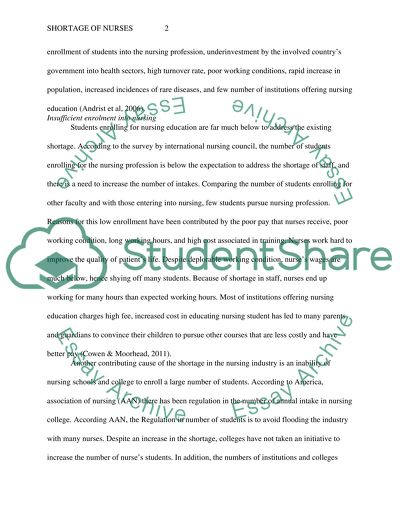Cite this document
(“Shortage of Nurses Research Paper Example | Topics and Well Written Essays - 2250 words”, n.d.)
Shortage of Nurses Research Paper Example | Topics and Well Written Essays - 2250 words. Retrieved from https://studentshare.org/nursing/1469388-shortage-of-nurses
Shortage of Nurses Research Paper Example | Topics and Well Written Essays - 2250 words. Retrieved from https://studentshare.org/nursing/1469388-shortage-of-nurses
(Shortage of Nurses Research Paper Example | Topics and Well Written Essays - 2250 Words)
Shortage of Nurses Research Paper Example | Topics and Well Written Essays - 2250 Words. https://studentshare.org/nursing/1469388-shortage-of-nurses.
Shortage of Nurses Research Paper Example | Topics and Well Written Essays - 2250 Words. https://studentshare.org/nursing/1469388-shortage-of-nurses.
“Shortage of Nurses Research Paper Example | Topics and Well Written Essays - 2250 Words”, n.d. https://studentshare.org/nursing/1469388-shortage-of-nurses.


